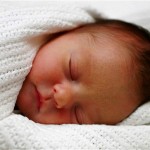There’s a remarkable demographic shift in Britain’s population with almost a tenth of babies and toddlers born in England and Wales being Muslim, fresh census figures reveal.
The percentage of Muslims among the under-fives is almost twice as high as in the general population. Less than one in 200 over 85s are Muslims, an indication of the extent to which birth rate is changing the UK’s religious demographic.
The Office for National Statistics produced the breakdown of Britain’s religions and age groups. The figures, according to the Times, were extracted from data collected in the 2011 census.
One expert said it was possible that Muslims who worshipped would outnumber practising Christians. “It’s not inconceivable,” said David Voas, Professor of Population Studies at the University of Essex.
Professor Voas said he saw no prospect of Muslims becoming a majority in Britain. Rapidly growing Muslim families are making their mark on society, however. The Department for Education lists 136 Muslim schools, 125 of them in the private sector.
The figures show there were 3.5 million children aged 0-4 of whom 320,000 were Muslim. That proportion is more than nine per cent and compares with a total Muslim population among all age groups of less than five per cent.
“It certainly is a startling figure,” said Professor David Coleman, Professor of Demography at the University of Oxford.
“We have had substantial immigration of Muslims for a long time. Continuing immigration from Pakistan, Bangladesh and India has been added to by new immigration from African countries and from the Middle East.
“Birth rates of Muslims of Pakistani and Bangladeshi origin remain quite high, although falling. There seem to be very low levels of falling away from religion among Muslims.”
Christians remain the largest religious group among those aged 0-4, at 1.5 million, 43 per cent.
Dale Barton, priest in charge at St Clement’s, a Church of England parish in Bradford, said:
“This was a white working-class British area 50 years ago. They have all gone. There are two pubs hanging on by their fingertips. There’s a Labour club. One club has just gone. Shops are now Muslim-owned. I’m not decrying that. A significant number open on Christmas Day.”
A Vote of Confidence
Ibrahim Mogra, assistant secretary-general of the Muslim Council of Britain said that the large number of young Muslim children was a vote of confidence in the country by Muslims.
“I just wouldn’t want our fellow citizens to be alarmed by an increase in number,” he said.
“This generation is very much British. They feel very much this is their home. It’s not about Britain becoming a Muslim country but about Britain enabling the practice of Islam, which gives confidence to the vast majority of Muslims. It’s a great country to regard as our home.”
Philip Lewis, a scholar of Islam and author of Young, British and Muslim, warned that the one-in-ten birth rate statistic could “generate alarmism”.
He emphasized the variety of the Muslim population across the country, which in London included an affluent Arab elite and Europeanized Turkish Cypriots. In parts of the urban north, though, there was a “bicultural reality” of indigenous and Kashmiri working classes. “We don’t have genuine diversity in many of these northern mill towns or great swathes of Bradford,” he said.
_________________________
Source: The Telegraph
 Arabic
Arabic English
English


